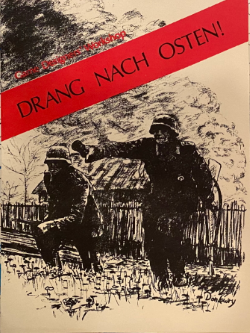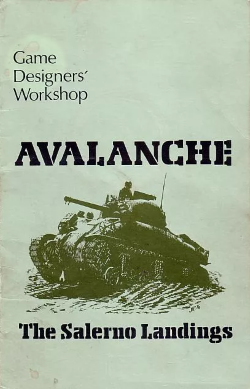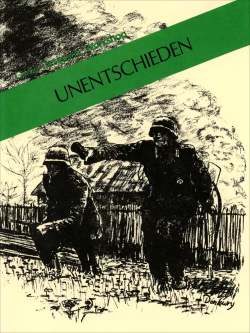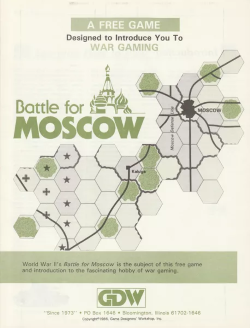Rich Banner | |
|---|---|
 Rich Banner in 1980 | |
| Born | Paul Richard Banner |
| Nationality | American |
| Occupation(s) | Game designer, graphic artist |
Paul Richard "Rich" Banner is an American game designer and graphic artist.
Rich Banner | |
|---|---|
 Rich Banner in 1980 | |
| Born | Paul Richard Banner |
| Nationality | American |
| Occupation(s) | Game designer, graphic artist |
Paul Richard "Rich" Banner is an American game designer and graphic artist.
Rich Banner and Frank Chadwick formed the ISU Game Club at the Illinois State University (Normal, Illinois). [1] Banner engineered a grant which funded the printing of blank hex sheets (suitable for making wargame maps) and they began drafting a variety of designs, some derivative of existing games at the time, and some original concepts.
In 1973, Illinois State University, under a program to fund educational innovation, created SimRAD (Simulation Research, Analysis, and Design), which designed games for implementation in the college classroom. At about the same time, Banner and Chadwick, along with newcomers Marc Miller and Loren Wiseman, decided to publish a massive World War II simulation game, and founded Game Designers' Workshop as their publishing company. [1] As university funding dried up for SimRAD, the three shifted their attention to the commercial sector. [1]
Game Designers' Workshop (using the plural possessive to reflect the three partners) adopted as its birthdate June 22, 1973. In that year, GDW published Banner and Chadwick's Drang Nach Osten! (the first of its Europa Series on World War II), Triplanetary, and Unentschieden (the sequel to Drang Nach Osten!). [1] In 1974, the company published five new titles, including Chaco, Eagles, Narvik, Torgau and Coral Sea.
Banner's position was art director, and his knowledge of printing and graphic design shaped GDW's public image and the appearance of its games. His graphic vision for Chadwick's Avalanche (a game of the Salerno landings in World War II) won him the Charles S. Roberts Award for Best Graphics in 1976. [2] His graphics for the System 7 (printed Napoleonics Miniatures) won him the H G Wells Award for Best Historical Figure Series in 1979 (and Chadwick received the companion H G Wells Award for Best Miniatures Rules for 1979).
Banner is credited as co-designer on six of the 11 original Europa Series of World War II wargames. [3]
He was honored as a "famous game designer" by being featured as the king of diamonds in Flying Buffalo's 2010 Famous Game Designers Playing Card Deck. [4]
Banner was the first treasurer (1977–78) for the newly formed Game Manufacturers' Association, and its second president (1978-1981). During his tenure, the Association established its basic goals of promoting and protecting the game manufacturing industry, and oversaw the creation of the annual GAMA trade show.
Europa is a series of board wargames planned to cover combat over the entire European Theater of World War II at a scale that represents units from divisions down to battalions and game turns that represent two weeks of time. The series was launched in 1973, and is still in production as of 2013, with over a dozen titles published and several more still in production or planning. Most of the titles qualify as "monster games", a subgenre of wargames featuring extensive orders of battle, a complex ruleset and usually a large game-map area with a detailed representation of the terrain they cover.

Game Designers' Workshop (GDW) was a wargame and role-playing game publisher from 1973 to 1996. Many of their games are now carried by other publishers.

Fire in the East is a monster board wargame published in 1984 by Game Designers' Workshop (GDW) that simulates Operation Barbarossa, the German invasion of the Soviet Union in 1941.

Drang Nach Osten! is a monster board wargame published in 1973 by Game Designers' Workshop (GDW) that simulates Operation Barbarossa, the German invasion of the Soviet Union in 1941. The game was the first of what was envisioned as a series of games with identical wargame rules and map scale that would simulate the entire Second World War in Europe.

The Charles S. Roberts Awards is an annual award for excellence in manual, tabletop games, with a focus on "conflict simulations", which includes simulations of non-military as well as military conflicts, as well as simulations of related historical topics. From its founding in 1975 through 2021, the award was almost exclusively focused on historical wargaming, changing to a broader "conflict simulations" in award year 2022.

Marc William Miller is a wargame and role-playing game designer and author.

Frank Chadwick is an American game designer and New York Times best selling author. He has designed hundreds of games, his most notable being the role-playing games En Garde!, Space: 1889 and Twilight 2000, and the wargame series Europa and The Third World War, as well as creating Traveller with Marc Miller. He has won multiple awards for his work.

Loren Keith Wiseman was an American wargame and role-playing game designer, game developer and editor.

Striker is a science fiction miniatures wargame, designed by Frank Chadwick, and illustrated by William H. Keith. It was published by Game Designers' Workshop in 1981 as a boxed expansion to the Traveller role-playing game. Although Striker is a 15mm miniatures ruleset, GDW consider it their eighth Traveller boardgame. It was republished in 2004 as part of Far Future Enterprises Traveller: The Classic Games, Games 1-6+.

John Evans Hill was an American designer of military board wargames, as well as rules for miniature wargaming. He is best known as the designer of the Avalon Hill board game Squad Leader and the American Civil War miniatures game Johnny Reb. He was inducted into the Charles Roberts Awards Hall of Fame.
War In The East: The Russo-German Conflict, 1941-45 is a board game published in 1974 by Simulations Publications.

A board wargame is a wargame with a set playing surface or board, as opposed to being played on a computer or in a more free-form playing area as in miniatures games. The modern, commercial wargaming hobby developed in 1954 following the publication and commercial success of Tactics. The board wargaming hobby continues to enjoy a sizeable following, with a number of game publishers and gaming conventions dedicated to the hobby both in the English-speaking world and further afield.

A monster game is a game that is either very large, very complex, or both. One criterion sometimes adopted is the number of pieces; a game which puts greater than 1000 counters into play at once may be considered to be a monster game. This classification can technically be applied to any board game, but most commonly refers to the kind of non-abstract wargames in which a large amount of time is needed to play each turn as a result of a relatively high commitment to period accurate military realism. Drang Nach Osten and its companion, Unentschieden led to the Europa Series games, a giant WWII game.

Avalanche: The Salerno Landings is a board wargame published by Game Designers' Workshop (GDW) in 1976 that simulates the nine-day battle for the beachhead at Salerno in September 1943 following the Allied amphibious landing known as Operation Avalanche.

Unentschieden is a board wargame published by Game Designers' Workshop (GDW) in 1973 that simulates combat on the Eastern Front during World War II. The game is a expansion of GDW's popular "monster" wargame Drang Nach Osten!, and was the second game in the Europa series that was planned to eventually cover all operations in the European Theatre.

Narvik: The Campaign in Norway, 1940 is a board wargame published by Game Designers' Workshop (GDW) in 1974 that simulates Operation Weserübung, the German invasion of Denmark and Norway during World War II. The game was one of the first in the Europa series of twenty interlocking games envisioned by GDW that would cover the entire European and North African theatres from the start to the end of World War II, using identical map scales and similar rules.

The Battle of Raphia, 217 B.C. is a board wargame published by Game Designers' Workshop (GDW) in 1977 that simulates the Battle of Raphia during the Syrian Wars. The game was the first in GDW's "Series 120", which featured shorter and less complex games containing only 120 counters that supposedly could be played in 120 minutes.

Guilford Courthouse is a board wargame published by Game Designers' Workshop (GDW) in 1978 that simulates the Battle of Guilford Court House during the American Revolution. Reviews of the game were mixed: critics liked the rules system but found the game predictable, with only a few strategic options open to either player.

Battle for Moscow is a short and simple board wargame published by Game Designers' Workshop (GDW) in 1986 that simulates Operation Typhoon, the German attempt to quickly capture Moscow during the opening days of their surprise invasion of the Soviet Union in 1941 during World War II. The game was designed as a free giveaway to try to introduce new players to wargaming.